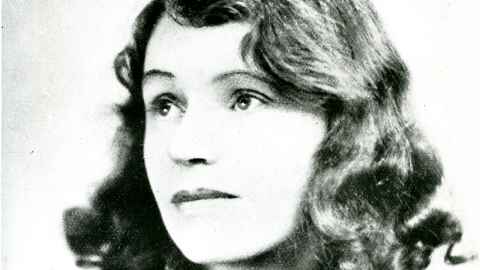UNESCO honour for writer Robin Hyde
2 March 2021
The University of Auckland's City Campus library houses many taonga in its Special Collections area – among those the literary papers of writer Robin Hyde.

The University of Auckland's Special Collections in Te Tumu Herenga has an exhibition showcasing the work of poet, novelist and journalist Robin Hyde.
The exhibition, Torrents of Amber: the Extraordinary Work of Robin Hyde, focuses on Hyde’s time in Auckland during the 1930s, a particularly productive period in her writing life, and explores her place in the city’s literary scene. (It will continue once Auckland is out of level three lockdown.)
The exhibition coincides with the recent addition of Robin Hyde’s papers to UNESCO’s New Zealand Memory of the World Register. The register is part of the New Zealand Memory of the World (MOW) Programme, which showcases significant items of documentary heritage and raises public awareness of their value and the work of the institutions that care for them. Other literary inscriptions on the New Zealand Register include the papers of writers Katherine Mansfield, Charles Brasch and John A. Lee.
Robin Hyde was the pseudonym of Iris Guiver Wilkinson (1906-1939), chosen in memory of her first son, Christopher Robin Hyde, who was stillborn. Hyde was born in South Africa and came to New Zealand as a small child. She grew up in Wellington and started work as a journalist with The Dominion newspaper at just 17.
Her life was one of challenge and upheaval. She suffered from bouts of severe depression and experienced ongoing pain from surgery to her knee when she was 18 which left her with a permanent limp. Despite these challenges, she produced an impressive body of work including three published collections of poetry and six books of prose. Hyde died in London in August 1939 of Benzedrine poisoning, aged 33.
Special Collections team leader Dr Nigel Bond says a UNESCO Memory of the World inscription is a major accolade that recognises Robin Hyde’s contribution to Aotearoa New Zealand literature.

Special Collections team leader Dr Nigel Bond says an MOW inscription is a major accolade that recognises Hyde’s contribution to Aotearoa New Zealand literature, her place as one of New Zealand’s great writers and the richness, research value and national significance of her papers.
The title for the exhibition at Special Collections comes from the poem ‘Rain in the Night’, which Hyde published in her third collection of poems, Persephone in Winter (1937). Writing at a time of global upheaval, Hyde’s poetry and prose reflects many of the social injustices she saw around her.
Her work as a war correspondent, in China in 1938, gave her personal insight into the atrocities of war, some of which are reflected in her work The Victory Hymn, on display in the Special Collections Reading Room at the University of Auckland.
Hyde’s literary papers are a valued part of the University’s Special Collections and have been used extensively by students and academics including Professor Michele Leggott, whose in-depth analysis of Hyde’s poetry resulted in the publication of a previously unpublished long prose poem The Book of Nadath, in 1999, and Young Knowledge: The Poems of Robin Hyde, in 2003.
Nigel Bond and Katherine Pawley
See Special Collections' holdings of Robin Hyde's papers.
Visit the display at Special Collections, Level G, University of Auckland General Library until Wednesday 17 March.
UNESCO's Memory of the World inscription.
This article first appeared in UniNews March 2021.